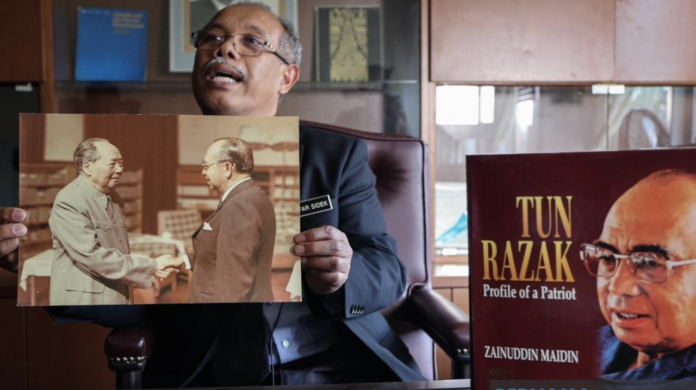KUALA LUMPUR, June 16 – As the saying goes, a picture is worth a thousand words and meanings.
The historic face-to-face meeting between Malaysia’s Father of Development, the late Tun Abdul Razak Hussein, and Chairman Mao Zedong at the Great Hall of the People in Beijing (formerly known as Peking), China in 1974 marked a pivotal moment for both nations.
The second prime minister at the time wore a black suit, white shirt, and dark tie as he shook hands with China’s Chairman Mao Zedong, clad in a gray tunic jacket, during their hour-and-a-half-long meeting at the hall.
Even though it is just a picture of a handshake, it carved a significant iconic moment in history, shaping Southeast Asia’s geopolitics and altering international politics amidst the Cold War’s Communist ideologies.
Even though this historic moment occurred half a century ago, on May 31, 1974, Malaysia’s National Archives meticulously preserves every photograph and important documents from that historic event.
Director-General of the National Archives, Datuk Jaafar Sidek Abdul Rahman, emphasised the importance of preserving the nation’s treasures for future generations.
“The diplomatic relations between Malaysia and China, now celebrating their golden jubilee, are special because Malaysia was the first ASEAN country to establish diplomatic ties with the republic.”
“At that time, there was international skepticism towards Communist-led countries. However, Abdul Razak’s pragmatic approach opened a new chapter for the country and the region,” he told BERNAMA in a special interview commemorating the golden jubilee of bilateral diplomatic relations between the two countries.
Jaafar Sidek noted that photographs of Abdul Razak with Mao and with Chinese Premier Chou En Lai after signing the agreement to establish diplomatic relations had adorned the front pages of newspapers in both countries and the international media.
These images have resurfaced, especially during this year’s 50th anniversary celebration of Malaysia-China diplomatic relations.
“The reception Abdul Razak received was remarkable, demonstrating China’s genuine appreciation for his efforts.”
“In addition to photographs, we (the Archives) also carefully preserve official letters, speech texts, and videos related to Abdul Razak’s first visit to the country,” he said.
At the end of spring in May 31, 1974, the national flags of China and Malaysia flew along Beijing’s main streets after the Joint Statement was signed by Abdul Razak and En Lai.
From the inception of these relations, Abdul Razak successfully mitigated Communist influence in Malaysia, allowing him to focus on national development.
“The Malayan Communist threat at that time was very acute, so when this cooperation was sealed, it became a stepping stone for Abdul Razak to stimulate the country’s development.”
Meanwhile, he said, the National Archives possess a collection of over 4,000 items related to Abdul Razak.
Jaafar Sidek emphasised that the National Archives continually ensures that every historical process in the country is well-documented.
“Collecting these materials is crucial for facilitating the public and researchers to understand the sacrifices made by our national leaders in placing Malaysia on the world stage,” he said.
More than 10 million pages of documents and photos have been digitized, making them essential in preserving this heritage while providing space and opportunities to disseminate information. They also serve as a platform for researchers to access historical facts at their fingertips.
He added that the National Archives is also planning to use artificial intelligence (AI) and augmented reality (AR) technologies to attract more young people to understand the nation’s history.
















